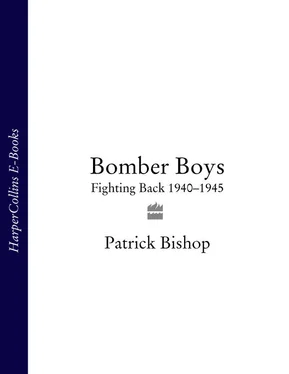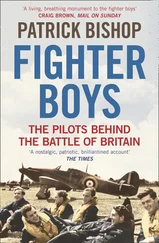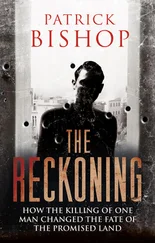1 ...7 8 9 11 12 13 ...27 Even with the influx of outsiders, civic pride was strong. ‘People were self-disciplined and proudly self-reliant,’ wrote Dennis Field, a Coventry schoolboy at the time of the raid who went on to join Bomber Command. There was a marked communal loyalty summed up in the signature tune of the city’s favourite entertainer, Sydney James, who appeared every week at the Rialto. As he played the organ, the audience would sing along.
Looking at life and wearing a smile
Helping a lame dog over a stile
Don’t mind the rain
Forget your umbrella
Or lend it, for once, to the other fella
Making the best of all that you find
Leaving your cares and your worries behind
Laughing at your troubles and your trials and your strife
Yes, that is the best way of looking at life … 1
An air of complacency seems to have hung over the pleasant streets of Coventry in the early part of the war. Its politics were Labour, a consequence of the strong trade-union movement rooted in the factories. Coventry people made weapons but many were opposed to their use. Pacifism and the disarmament movement were strong. In Coventry, as elsewhere, a strange mood of insouciance, verging on fatalism, was noticeable as the violence grew nearer. When, in the spring of 1939, the authorities offered Anderson bomb shelters at a price of five pounds (free for the lower-paid) there were few takers. Those who accepted had their legs pulled for being ‘windy’.
In June 1940, when the first bombs dropped on Ansty aerodrome just outside the city, they were seen as a novelty. People set out in cars and on bicycles to gawp at the craters. The thrill soon wore off. Between 18 August and the end of October Coventry was attacked seventeen times, killing 176. As the casualty list lengthened, people started leaving the city at night, ‘trekking’ to the safety of the surrounding countryside. The better off went by car, the less affluent by bus. The very poorest piled bedding on to prams and walked out, sleeping under bridges.
By the time of the big raid people had grown accustomed to the howl of the sirens and the nuisance of shifting down to the basement or heading to the nearest public shelter. For the workers of the fire service and Air Raid Precautions, the attacks provided good practice. They had seen mutilated bodies and knew what an air raid felt like.
Despite the acknowledged threat, Coventry’s defences were weak, with only thirty-six anti-aircraft guns protecting the city. There were searchlights and fifty-six reassuring-looking barrage balloons wallowed over the city, but they were not much of a deterrent on the fatal night. RAF night-fighters found tracking intruders in the dark an almost impossible task and their success rate was to remain pitifully low until enough aircraft were fitted with radar.
A shelter-building programme had been accelerated as the raids continued and there was room inside them for most of the population but many of them were damp and cheaply built. The council’s emergency committee kept an informal log of what was being said in bus queues and pubs. The state of the shelters, the feebleness of the anti-aircraft defences and the absence of British fighters were consistent themes of complaint. 2
Coventry’s transformation from an obscure Midlands city to an international symbol of civilian suffering and the inhumanity of modern war started at dusk on Thursday 14 November when crews of the Luftwaffe Pathfinder Force Kampfgruppe 100 boarded Heinkel 111s and took off from a base at Vannes, north of Saint-Nazaire. Coventry was one of three targets that night. The others were Wolverhampton and Birmingham.
The moon began to rise over Coventry at 5.18 p.m. Everyone would later recall its extraordinary brightness. It gleamed on the cobbles of the old city and the lead roof of the cathedral. The sight made people nervous. The citizens had come to fear a bomber’s moon. At 7.10 p.m. the sirens sounded. This was early for a raid to be announced and the apprehension deepened. Ten minutes later the Germans were overhead and the bombardment began. It started with small incendiaries. They made a curious swishing noise as they fell. By now people had learned how to deal with them, picking them up with a long-handled shovel and dropping them into a bucket of water or sand.
But they came down in huge numbers and the emergency services and volunteer firewatchers were soon overwhelmed. At 9.31 p.m. the first high explosive (HE) bombs hit the ground. A firewatcher’s log recorded at 9.40 p.m.: ‘Cathedral blazing fiercely. HEs all around the city centre.’ The sirens had sent women and children hurrying out into the blacked-out streets to seek the public shelters, or down into their basements or back-garden Andersons. ‘When the sirens sounded I was doing homework in our front room,’ Dennis Field remembered. ‘The continual drone of engines and falling bombs made it quickly obvious that the raid was unusually heavy and Mum and I soon decided to go to next-door’s shelter where we had an open invitation when things looked sticky. It was cold and we took extra coats … the bombs rained down … many times we crouched down expecting the worst … occasionally there were colossal bangs and blasts which blew open the door. I wanted to go out and see what was happening and to help if I could but demurred to Mum’s pleadings and restricted myself to occasional peers outside. The sky seemed aglow with the brightest huge conflagration lighting the sky in the direction of the city centre.’
After the initial fire-raising attack lit up the city the main force of bombers converged on it in three streams, crossing the English coast at Lincolnshire, Portland and Dungeness. The raid had been planned in considerable detail. Each of the eight bomber units involved had been assigned an objective. Their targets included the Alvis aero-engine factory, the Standard Motor Company, the British Piston Ring Company, the Daimler works and the Hill Street Gasworks. The greatest destruction was done to the Daimler factory to the north of the city centre, which produced among other things rotating gun turrets. The site was struck by up to 150 HE bombs and 3,000 incendiaries. The Alvis factory was bombed flat. Altogether twenty-seven war production factories including twelve engaged in making aeroplanes were hit.
The raid reached a climax around midnight. A survivor remembered ‘a night of unforgettable horror – the scream of falling bombs – the shattering explosions – the showers of incendiaries, literally thousands, and then … perhaps the most horrifying sight of all – the sudden fires leaping up, their flames, fanned by the wind, rapidly spreading and enveloping all within reach.’ 3The smell of the burning city reached up to the bombers. A crewman, Hans Fruehauf, who had taken part in the first London raids, looked down on the lake of fire and wondered what he was doing. ‘The usual cheers that greeted a direct hit stuck in our throats. The crew just gazed down at the flames in silence. Was this really a military target, we all asked ourselves?’ 4A ‘Front Reporter’ for the German propaganda service was a passenger in one of the aircraft. He had no doubts of the legitimacy of what he witnessed. ‘We could see enormous fires raging, some white and brilliant, others dark red. Then came the high spot of the raid, the dropping of the bombs … a tremor went through the machine as the bombs dropped … our bombs had hit their mark; the fires extended … it is the nerve centre of the British armament industry which had been hit, and I am proud that I witnessed this.’ 5
The anti-aircraft guns soon ran out of ammunition and there was no sign of RAF night-fighters so the Germans were free to bomb as they pleased, swooping in low to improve accuracy. As mains were shattered and hydrants buried under rubble, the firemen’s hoses ran dry. Crews drafted in from outside watched impotently as Coventry burned. The fire was fiercest in the old city centre. John Sheldon who owned a stables in Little Park Street described the din of ‘falling walls, girders, pillars, machinery crashing four storeys, the droning of the planes as they let go their bombs and the rattling of shrapnel on corrugated sheeting’. It seemed to him that no one caught in the open could possibly have survived. 6
Читать дальше












